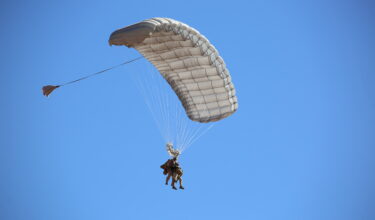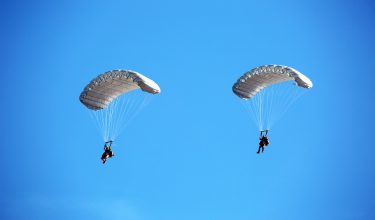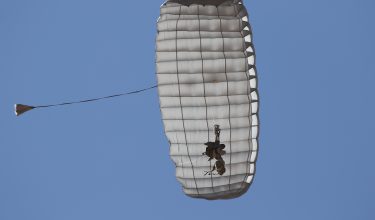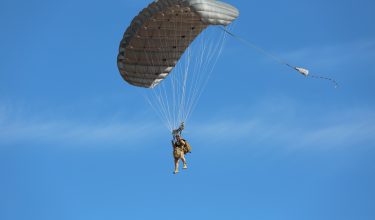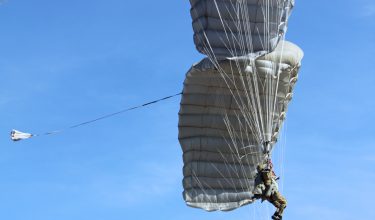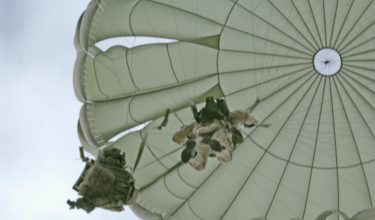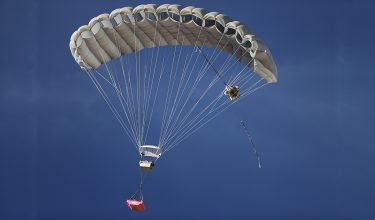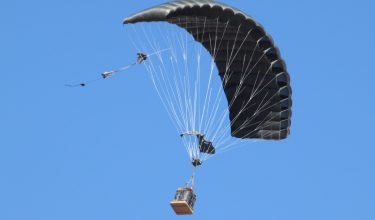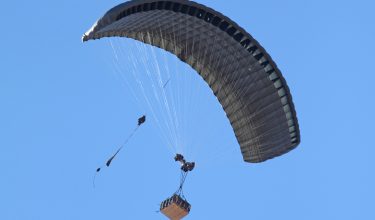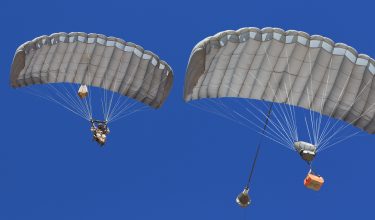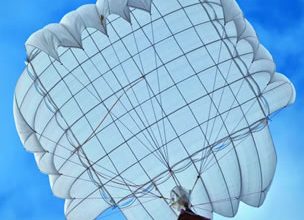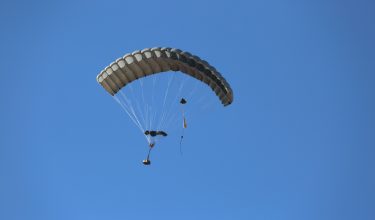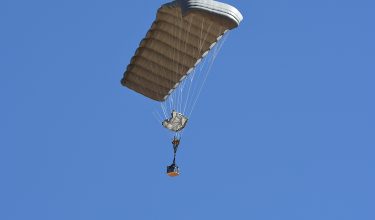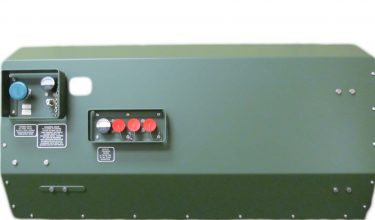L’historique de nos jalons et accomplissements

(English) 2008
Désolé, cet article est seulement disponible en English et Español. Airborne Systems successfully tests the “GigaFly”, setting the world record for the largest ramair canopy carrying the heaviest weight ever flown (40,000 lb).
(English) 2006
Désolé, cet article est seulement disponible en English et Español. Irvin awarded development of parachute program for NASA Orion spacecraft replacing the space shuttle in 2010.
(English) 2005
Désolé, cet article est seulement disponible en English et Español. Space X — Irvin develops the parachute recovery system for first stage recovery of Falcon I commercial launch vehicle for low cost transport of satellites to low earth orbit.
(English) 2003
Désolé, cet article est seulement disponible en English et Español. NASA Pad Abort Demonstrator program flies 4,156 ft diameter Ringsail cluster — recovery system test, demonstrating technology for a future manned spacecraft crew.
(English) 1996
Désolé, cet article est seulement disponible en English et Español. Irvin designs and tests a cluster of 3 Ringsail parachutes to recover the Boeing EELV concept’s 20,000 lb propulsion module demonstrating the technology to successfully return the first stage rocket engine to a water landing for subsequent recovery, refurbishment and re-use.
(English) 1978
Désolé, cet article est seulement disponible en English et Español. Irvin flight termination & mid-air recovery system is used on the Air Launched Cruise Missile (ALCM).
(English) 1976
Désolé, cet article est seulement disponible en English et Español. Goodyear, in collaboration with Irvin, uses a parachute decelerator system to safely land the Viking spacecraft on Mars.
(English) 1965
Désolé, cet article est seulement disponible en English et Español. Irvin’s first mortar deployed Spin/Stall Parachute Recovery System is used on DC9 development aircraft.
(English) 1960
Désolé, cet article est seulement disponible en English et Español. First aerial recovery of a space capsule launched from an orbiting satellite (Discoverer 13) uses an Irvin parachute recovery system.

